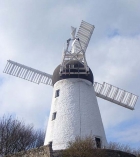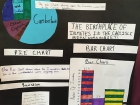The Victorians
A popular unit of study in Key Stage 2 has in the past been the Victorians. It is possible to continue to study the Victorians through either a local study or through a unit of study beyond 1066, although the emphasis now shifts to the Victorians representing a turning point. Given that so much reform and industrial change took place during this period, turning points are not difficult to find. In this section, you will find articles and resources to help you to plan to teach the Victorian period as a turning point.
Sort by:
Date (Newest first) | Title A-Z
Show:
All |
Articles |
Podcasts |
Multipage Articles
-

How to make a toy museum
ArticleClick to view -

Implementing the 2014 curriculum in Year 2
ArticleClick to view -

Isambard Kingdom Brunel: A Significant Victorian
ArticleClick to view -

Lesson Planning Recipe
ArticleClick to view -

Local study: Fulwell Windmill
ArticleClick to view -

Making the most of a census
ArticleClick to view -

Museums, schools and creativity: How learning can be enhanced
ArticleClick to view -

My favourite place: Lyme Regis, Dorset
ArticleClick to view -

National Archives Victorian Website
ArticleClick to view -

Northamptonshire in a Global Context
ArticleClick to view -

One of my favourite history places: Bournville
ArticleClick to view -

One of my favourite history places: Meldon Viaduct
ArticleClick to view -

One of my favourite history places: Saltaire
ArticleClick to view -

One of my favourite history places: the West Riding Pauper Lunatic Asylum
ArticleClick to view -

Planning a Victorian School Day
ArticleClick to view -

Poverty in Britain: A development study for Key Stage 2
ArticleClick to view -

Queen Victoria as a Politician
ArticleClick to view -

Queen Victoria's visit to Wolverhampton, November 30 1866
ArticleClick to view -

Reading, recovering and re-visioning Victorian Women
ArticleClick to view -

Resources for courses: ideas for your history curriculum
ArticleClick to view

